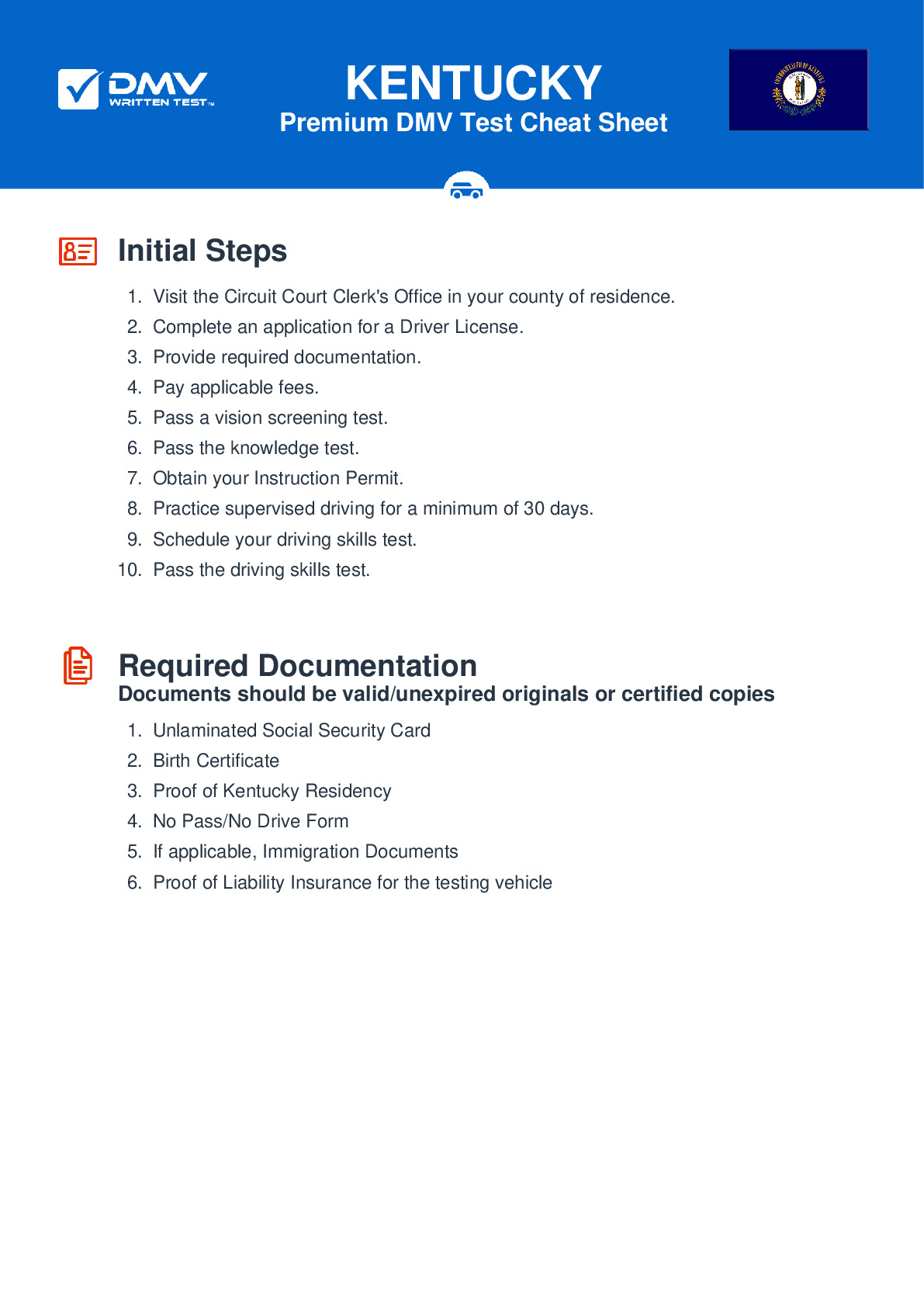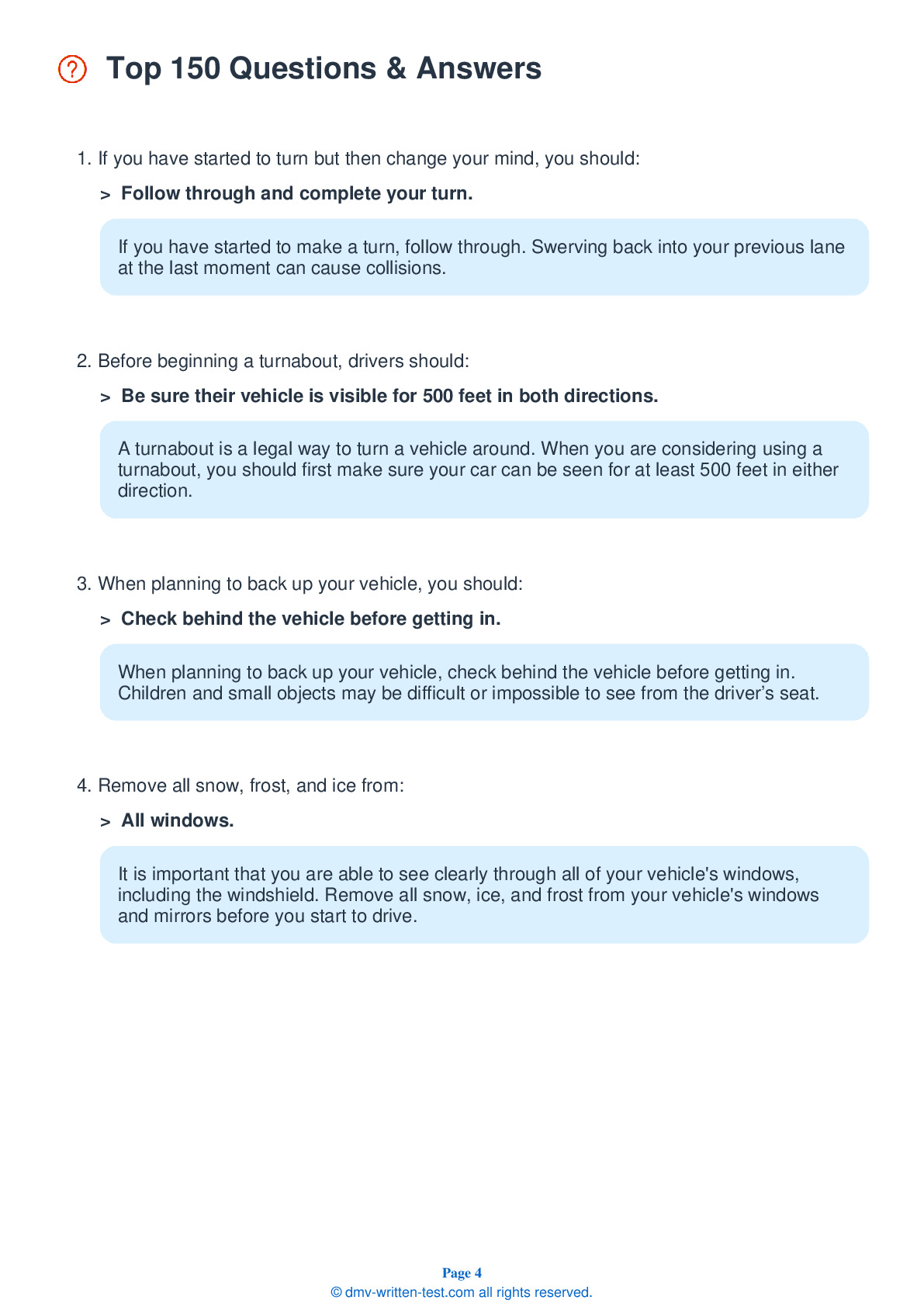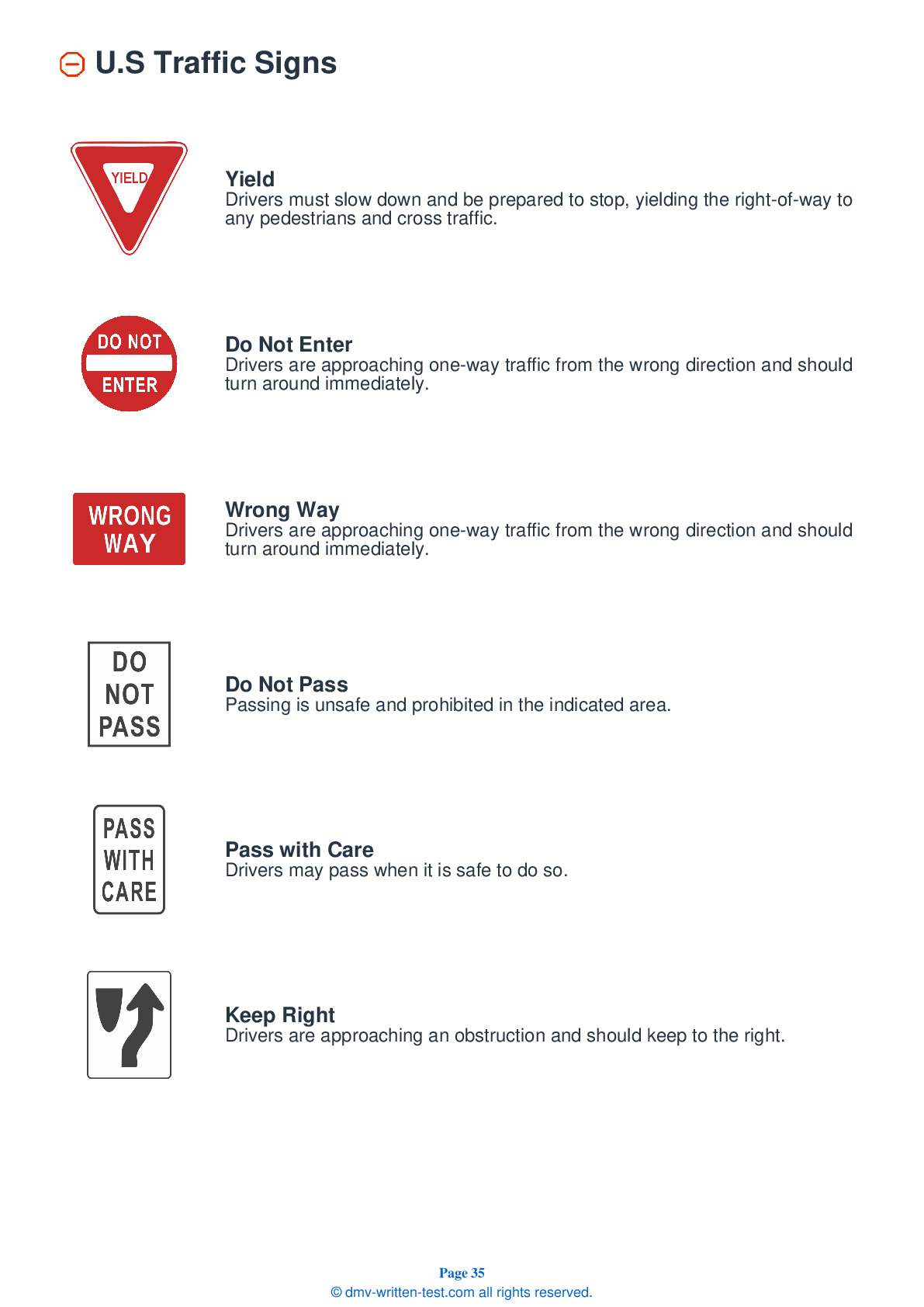2025 Kentucky Permit Test 21
The following questions are from real DMV written tests. These are some of the actual permit questions you will face in Kentucky. Each permit practice test question has three answer choices. Select one answer for each question and select "grade this section." You can find this button at the bottom of the drivers license quiz. For a complete list of questions and answers for Kentucky please visit https://cheat-sheets.dmv-written-test.com/en/kentucky/car.
Number of Tests
Number of Question
Passing Score
1. Posters, signs, and stickers on the windshield and windows:
Explanation
Obstructions on windows are prohibited. No sign, poster, or sticker may be placed on any window of any vehicle, unless it is specifically required by law to be on the vehicle's window.
2. As you approach the top of a hill, you should:
Explanation
You may not know what is on the other side of a hill or just around a curve, even if you have driven the road many times. If a vehicle is stalled just out of sight on the roadway, you must be able to stop. Whenever you come to a hill or curve, adjust your speed so you can stop if necessary.
3. When exiting the interstate, drivers should begin to decelerate:
Explanation
When exiting the interstate, maintain your speed for as long as you are on the main road. Do not slow down until you move into the deceleration lane.
4. A broken yellow centerline means that:
Explanation
A broken yellow centerline means that a driver may cross the centerline to pass another vehicle on the left as long as there is no oncoming traffic. Drivers should never cross a solid yellow centerline in order to pass.
6. When driving at night, you should:
Explanation
Driving at night is more hazardous than daytime driving because the lowered visibility makes it difficult to judge speed, distances, and other potential hazards. Increase your following distance to help prevent a potential collision if the vehicle in front of you should stop abruptly. Use your headlights when driving at night, following the rules for proper usage of high beams and low beams.
7. When passing another vehicle, you should return to your original lane when:
Explanation
When passing another vehicle, move back into your original lane only when you can see the passed vehicle’s headlights in your rearview mirror. This ensures that you will have enough room to safely pull back in front of the other vehicle.
8. When driving on the highway, consistently looking far ahead of your vehicle:
Explanation





